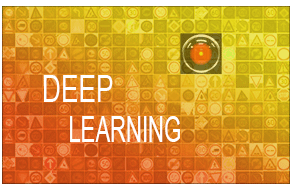
http://people.idsia.ch/~juergen/
Since age 15 or so, Prof. Jürgen Schmidhuber's main scientific ambition has been to build anoptimal scientist through self-improving Artificial Intelligence (AI), then retire. He has pioneeredself-improving general problem solvers since 1987, and Deep Learning Neural Networks (NNs)since 1991. The recurrent NNs (RNNs) developed by his research groups at the Swiss AI Lab IDSIA & USI & SUPSI (ex-TU Munich CogBotLab) were the first RNNs to win official international contests. They recently helped to improve connected handwriting recognition, speech recognition, machine translation,
 optical character recognition, image caption generation, and are now in use at Google, Microsoft, IBM, Baidu, and many other companies. IDSIA's Deep Learners were also the first to win object detection and image segmentation contests, and achieved the world's first superhuman visual classification results, winning nine international competitions in machine learning & pattern recognition (more than any other team). His research group also established the field ofmathematically rigorous universal AI and optimal universal problem solvers. His formal theory of creativity & curiosity & fun explains art, science, music, and humor. He also generalized algorithmic information theory and the many-worlds theory of physics, and introduced the concept of Low-Complexity Art, the information age's extreme form of minimal art. Since 2009 he has been member of the European Academy of Sciences and Arts. He has published 333 peer-reviewed papers, earned seven best paper/best video awards, and is recipient of the 2013 Helmholtz Award of the International Neural Networks Society. Progress is accelerating - are 40,000 years of human-dominated history about to converge within the next few decades?
optical character recognition, image caption generation, and are now in use at Google, Microsoft, IBM, Baidu, and many other companies. IDSIA's Deep Learners were also the first to win object detection and image segmentation contests, and achieved the world's first superhuman visual classification results, winning nine international competitions in machine learning & pattern recognition (more than any other team). His research group also established the field ofmathematically rigorous universal AI and optimal universal problem solvers. His formal theory of creativity & curiosity & fun explains art, science, music, and humor. He also generalized algorithmic information theory and the many-worlds theory of physics, and introduced the concept of Low-Complexity Art, the information age's extreme form of minimal art. Since 2009 he has been member of the European Academy of Sciences and Arts. He has published 333 peer-reviewed papers, earned seven best paper/best video awards, and is recipient of the 2013 Helmholtz Award of the International Neural Networks Society. Progress is accelerating - are 40,000 years of human-dominated history about to converge within the next few decades?  |
 |
No comments:
Post a Comment